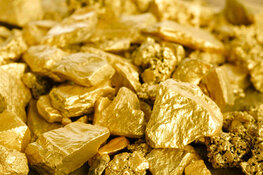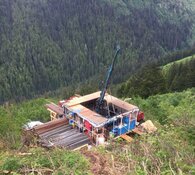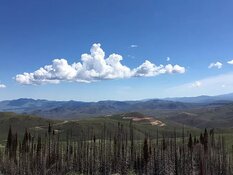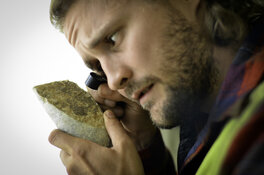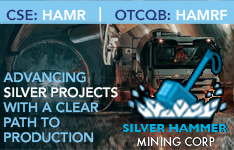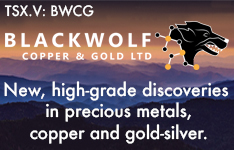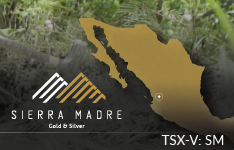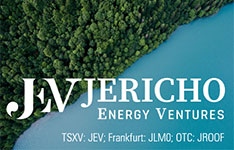BacTech Environmental Corp. (BAC:CSE;BCCEF:OTCQB;OBT1:FRA) announced it has revised its existing provisional patent application for its application of the bioleaching process to millions of tons of tailings to create zero waste using green technology and power.
"Bioleaching is not only effective at extracting metals of value, such as nickel and cobalt, but is also highly effective at splitting iron from sulfur to form soluble ferric sulphate and sulfuric acid," the company noted in a release. "These compounds normally are neutralized in conventional bioleach processing, creating a large amount of benign waste for disposal."
The company's newest intellectual property (IP) selectively transforms the soluble iron and sulfuric acid into iron metal and produces ammonium sulphate fertilizer, while recovering nickel, copper, and cobalt.
"The ultimate goal is to create zero waste from the tailing reprocessing operation using green technology and green power," the company said.
BacTech said it's independently estimated that there are 80 to 100 million tonnes of pyrrhotite tails in the Sudbury, Ontario, basin grading 0.85% nickel and 0.03% cobalt, in addition to the copper that has been deposited over the past 100 years of mining.
Pyrrhotite is a highly reactive iron sulfide mineral that reacts strongly when exposed to oxygen, releasing soluble acidic iron harmful to the environment. BacTech also said the tailings contain lower-grade nickel and cobalt values.
"The proposed process is carbon neutral and creates zero waste," the company said. "The addition of revenues to be generated by the sulfur and the iron products, in addition to the base metals, will greatly assist in potentially making an operation such as this profitable."
The Process
Under the process, pyrrhotite tails are fed to the conventional bioleaching circuit and nickel, copper, cobalt, iron, and sulfur values are made soluble.
After being separated, the solution progresses through several steps to produce ammonium sulphate and, using either electrowinning or hydrogen reduction technology, iron metal or iron hydroxide pellets.
"Using the sulfur component of the pyrrhotite, coupled with eliminating the use of limestone as a neutralizer to produce gypsum, as in conventional bioleach processing, eliminates a significant amount of benign waste material being returned to the tailing's facility," BacTech said. "In a similar theme, the production of a saleable iron product avoids the need for disposal of iron compounds as waste."
The sequential precipitation of the copper, nickel, and cobalt from solution as a precipitate will then leave only the soluble ammonium sulphate in the solution, which is crystallized and bagged for sale with water being returned back to the process.
Electrowinning, the oldest industrial electrolytic process, is the electrodeposition of metals from their ores that have been leached into a solution.
"The idea of direct electrowinning of iron is attracting attention as it represents production of iron without a furnace and only needs electricity which can be provided from green sources," BacTech noted. "For the BacTech process, it means instead of paying for the drying, pelletizing, and transport of large tonnages of ferric hydroxide from site to the steel works, we are producing much smaller tonnages of pure metal iron on-site for direct sale/transport to a larger number of industries."
Sending electricity to the mine to make steel on site with electrowinning is cheaper than transporting the ferric oxide, the company said.
"Iron is an element that is hard to dispose of, so the concept of producing iron onsite for sale not only addresses the tailings issues but also provides an additional revenue source for the mine," BacTech said. "In a similar manner, the sulfhur content of pyrrhotite is also high at between 35% and 45% so it makes sense to produce a valued commodity such as fertilizer from this element."
MIRARCO, (Mining Innovation, Rehabilitation, and Applied Research Corporation), led by Dr. Nadia Mykytczuk, has assembled a pilot-scale bioleach circuit in Sudbury where the BacTech technology will undergo test work to break down the pyrrhotite sulfide mineral into its individual elements, BacTech said.
The company bioleached pyrrhotite material 25 years ago at Radio Hill, Australia, It said it is confident that it can duplicate those results. The new IP creates additional project value with multiple products not achievable using conventional bioleach processing.</p
'Poster Child' for a Green Cause
BacTech is also building a bioleaching plant in Ecuador. After receiving its long-awaited environmental license, the country fell into civil rest earlier this year.
However, new Ecuadorean president Daniel Noboa was decisive and declared a state of emergency and arrested major drug lords, bringing some stability back to the country.
"The fear factor resulting from this caused the stock to slide lower, but as we will see when we peruse the charts, the stock did not break down and has not suffered significant technical damage, so the larger bullish picture remains intact," Technical Analyst Clive Maund wrote in February.
Maund noted that the company's six-month chart shows "positive developments over the past week or two."
 Streetwise Ownership Overview*
Streetwise Ownership Overview*
BacTech Environmental Corp. (BAC:CSE;BCCEF:OTCQB;OBT1:FRA)
"The first of these is the appearance of a bullish candle on the chart late last month right at the support where the price closed at the day’s high on strong volume — this looks like a reversal candle, and the relative strength of the Accumulation line at that time and since supports this assertion," wrote Maund, who rated the stock a Strong Buy for all timeframes. "So, there is thought to be a good chance that BacTech will advance from here."
Chris Temple of The National Investor, a supporter and shareholder of the company, agreed, calling the company "a poster child for what is legitimately a green cause."
Ownership and Share Structure
Nearly half of the company, 49%, is held by insiders, management, and strategic shareholders, the biggest of which is Option Three Advisory Services Ltd., which owns 8.48%, or 15.57 million shares, according to Reuters. That also includes CEO Orr, who owns 3.57% or 6.54 million shares, and Board Director Timothy Lewin, who owns 0.54% or 0.98 million shares.
The rest is retail.
The company has 193.04 million shares outstanding. Its market cap is CA$10.19 million, and it trades in a 52-week range of CA$0.10 and CA$0.05.
| Want to be the first to know about interesting Silver, Base Metals and Gold investment ideas? Sign up to receive the FREE Streetwise Reports' newsletter. | Subscribe |
Important Disclosures:
- BacTech Environmental Corp. is a billboard sponsor of Streetwise Reports and pays SWR a monthly sponsorship fee between US$4,000 and US$5,000. In addition, BacTech Environmental Corp. has a consulting relationship with an affiliate of Streetwise Reports, and pays a monthly consulting fee between US$8,000 and US$20,000.
- As of the date of this article, officers and/or employees of Streetwise Reports LLC (including members of their household) own securities of BacTech Environmental Corp.
- Steve Sobek wrote this article for Streetwise Reports LLC and provides services to Streetwise Reports as an employee.
- This article does not constitute investment advice and is not a solicitation for any investment. Streetwise Reports does not render general or specific investment advice and the information on Streetwise Reports should not be considered a recommendation to buy or sell any security. Each reader is encouraged to consult with his or her personal financial adviser and perform their own comprehensive investment research. By opening this page, each reader accepts and agrees to Streetwise Reports' terms of use and full legal disclaimer. Streetwise Reports does not endorse or recommend the business, products, services or securities of any company.
For additional disclosures, please click here.



